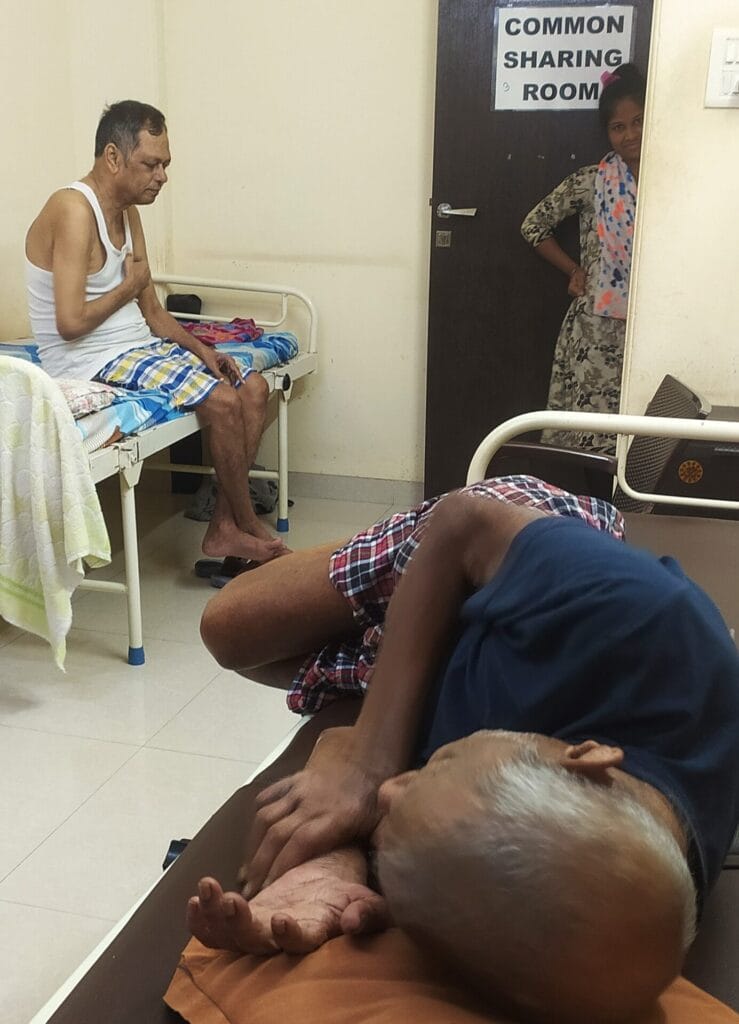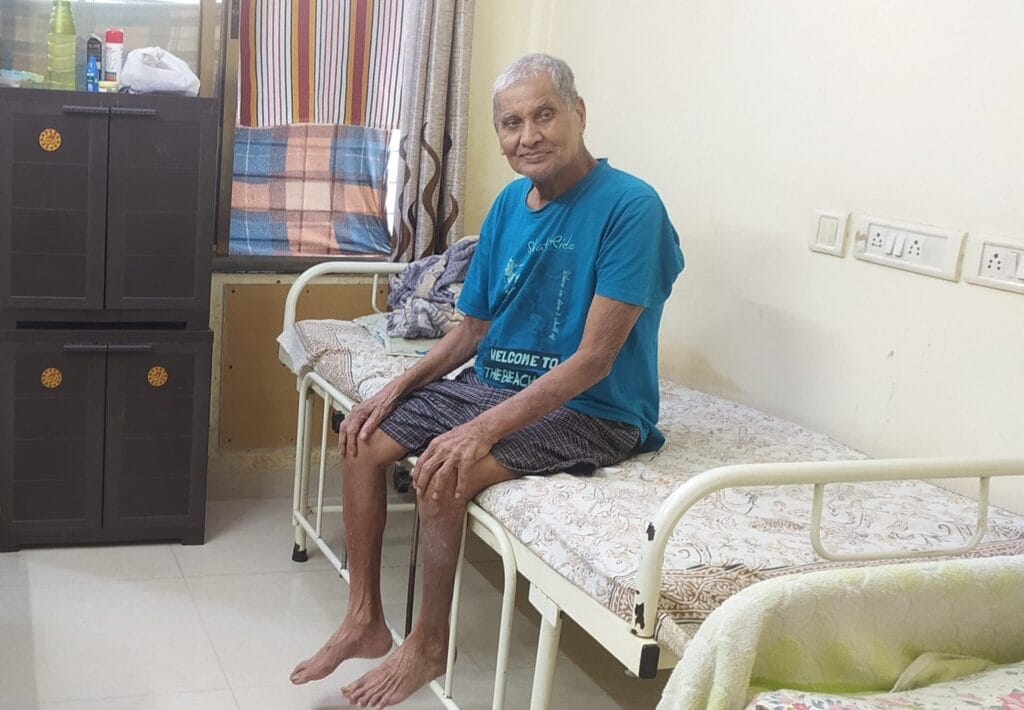The elderly population in India is rapidly rising. According to the India Ageing Report-2023 released by the United Nations Population Fund (UNFPA), those above 60 years of age are set to constitute 15% of the population by 2036 (22.7 crore).
From about 10.5% (14.9 crore) of the population in 2022, the population of senior citizens is likely to increase to 20% in 2050 (34.7 crore), thus throwing up new challenges related to their safety, well-being and health.
The report also stressed on the need to focus on policies and programmes to meet the needs of the elderly, especially older women since they are estimated to outlive their male counterparts.
In the backdrop of these projected developments, Citizen Matters is doing a multi-part series, looking at the safety of the elderly, supporting infrastructure for the elderly, legal and community safeguards available for the rights of the elderly. We will also try to identify the gaps that need to be plugged to provide safety, security, care to our elderly.
In the first part, we identified the safety risks and measures taken by the Mumbai Police.
In this second part, we look at the availability and need for more old age homes in Mumbai.
No place like home, or is it?
Madan Rane (name changed), 61, lost his eyesight completely following the death of his spouse. A retired manager with the LIC, his children found it difficult to take care of him and he now lives at an old age home in Mumbai’s Kandivali suburb.
“There is space in our house, but no space in my children’s hearts to accommodate me,” he rues as he shares the room with two other elders. His private old age home is spacious and has good facilities including CCTVs. It costs Rs 20,000 per month.
His neighbouring roommate Ramakant Shide (name changed), 83, too is lying on the bed unwell. He was a bachelor and had stayed with his sister, till his sister’s family put him here.
With families disintegrating really fast and children migrating abroad, the elderly are increasingly finding themselves in private care centres that have been mushrooming to cater to this new demand.
Commercial old age homes
Setting up private old age homes has come to be widely considered a business enterprise, and one can start such a facility without any particular licences.
Asif Shaikh, project consultant and trustee of Vimaltidevi Foundation, which runs eight private old age homes and has another four centres coming up, says that care centres for the aged are the need of the hour. Asif says that there should be no uneasiness or hesitation about housing elders at these centres, which have been modelled on care facilities available for the elderly abroad.

“We get elders with variousconditions – those with Alzheimer’s or those dependent on nasogastric tubes or urinary catheters (urine bags) or those, who are simply bedridden. We have dedicated nurses monitoring them 24X7. Video updates are sent on WhatsApp to their children about how and what kind of food their parents/ elders are having. We also take the elders, including the wheelchair-bound, to the neighbouring garden regularly for fresh air,” says Asif.
He says that for a fee (starting from Rs 20,000 per month), the children are assured of their parent’s well-being, hygiene, safety and security. “Facilities like ours are in demand because leaving the elders unsupervised with caretakers can be risky,” he says.
Taking care of senior citizens is a growing business and people like Asif are willing to offer their expertise to those willing to invest. He is also in the process of constructing more centres with higher intake capacities.
Read more: What you should do if you spot elder abuse
Acute shortage of old age homes
For its estimated population size of 1.2 crore and with a senior population estimated to be about 11.08 lakh, Mumbai has very few old age homes.
Mumbai doesn’t have a single free government-run home to care for the elderly. Apart from a few partially aided old age institutions, most of the old age homes are either run by charitable institutions or on purely commercial basis.
“Though the Maintenance and Welfare of Parents and Senior Citizens Act, 2007 stipulates that every district should have at least one old age home, it is yet to be complied with,” says Nirmala Samant Prabhavalkar, former Mumbai mayor and founder of the Centre for Study of Social Change.

People are forced to depend on elderly homes that are located far away from the city limits. “As real estate is very costly in Mumbai, it becomes difficult to set up a space within the city for 70-80 elderly people, with sufficient space to live and move around,” says Zohair Diwan, founder of NESH Foundation, which has recently opened a free old age home along with Nalwala Foundation at Boisar, 118 km from Mumbai
Zohair, who also heads the Mumbai Citizens Forum, says the free charitable facility for the elderly was set up to cater to the acute need for elderly care homes. This is especially relevant in the context of increasing cases of children settling abroad, disintegrating families with no one left to care for the old, working children with no time to care for their elders, and even shortage of living spaces.
NESH Foundation’s only criteria for admitting elders is that they should be able to walk independently and not have any contagious diseases. The Foundation also counsels children to ensure that they do not avoid their responsibility towards their parents /elders.
State govt’s old age home scheme loses steam
Incidentally, the Maharashtra government did initiate a scheme to set up old age homes, but the scheme suffered after government aid was withdrawn for it.
“In November 1995, the Maharashtra government had launched Matoshree old age home scheme, in which NGOs built and managed old age homes on two-acre of free-hold government lands with provision of government aid – Rs 500 per month per inmate. About 50% of inmates were to be accommodated free of cost. However, subsequently, the aid was discontinued and many of the homes shut down,” says Sharad Dicholkar, president of Mumbai zone of the Federation of Senior Citizens Organizations of Maharashtra (FASCOM).
Currently, only 23 government-aided Matoshree homes operate in Maharashtra including one at Gorai, Mumbai, as per the website of ministry of social justice and special assistance.
Apart from this, the union ministry of Social Justice and Empowerment, provides grant-in-aid to 38 old age homes run by NGOs across Maharashtra and 502 homes across the country under the Atal Vayo Abhyudaya Yojana (AVAY) for running and maintaining homes for the elderly.
Additionally, there are 33 aided homes run by NGOs where the state government provides aid of Rs 900 per elderly. Besides these, there are many private elderly care homes mushrooming to meet the growing demand.
Read more: A senior citizen’s guide to claiming maintenance
Need for government interventions
“The (Maharashtra) government should take up the initiative to set up old age homes. Especially since there is a provision to receive 60% of grants from the Centre for that, along with 40% state government contribution,” feels Nirmala.

“The government could have a provision to reserve a few flats for elderly homes in new townships, slum redevelopment or MHADA buildings that come up in the city. This is the only way to ensure that old age homes are available and accessible within the city’s residential areas and not in some far-flung areas. Otherwise, with such high real estate rates, construction of new old homes really looks difficult,” suggests Vijay Aundhe, vice-president of FASCOM.
Rules governing old age homes
The Atal Vayo Abhyuday Yojana scheme (AVAY) mandates 7.5 sq metres of space per resident for bedroom/dormitory facilities. A carpet area of 12 sq metre per resident is to be provided for all living facilities inclusive of toilets, kitchen, dining hall, recreation room. The homes are expected to provide good quality food in adequate quantities containing an average of 1700 calories and 50 grams of protein every day.
The NGO/implementing agency has to arrange for land in urban areas. However, the government could provide land for setting up such homes in rural or semi-urban areas. But, there is no provision for state support in constructing old age homes.
Old age homes are also expected to coordinate with local hospitals for medical emergencies and with police stations for security issues.
How to start an old age home
In case you wish to start an old age home with no specialised geriatric care, you can simply register as a company doing business. However, in case you are looking for government aid, then you need to register on NGOdarpan.gov.in portal of Niti Aayog to be eligible for government aid. Thereafter, you may have to apply for grants from the website of the union ministry of social justice and empowerment.
[Postscript: Part 3 of this series looks at the special needs for the elderly destitute, abandoned by their families.]
We are running a Senior citizens home in Boisar for seniors who str 65+ yrs old and above
The person needs to walk by himself, eat his food with his own hands and do his daily routine by himself. We provide 5 meals a day both veg and non veg. Our home I’d funded by NALWALA FOUNDATION and we do not charge a single rupee to the patient. We provide accommodation, food and basic medicine all FREE OF CHARGES.Contact: Hussain Nalwala mobile:8879967571
I am interested to know more about old-age funding and established new old-age home near Kahat. I have purchese N A plot of 25000 sq ft. can you guide me? I can invest about 4cr. from sale procid of my flat.